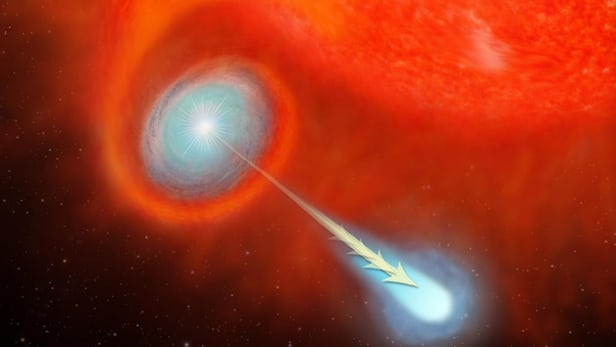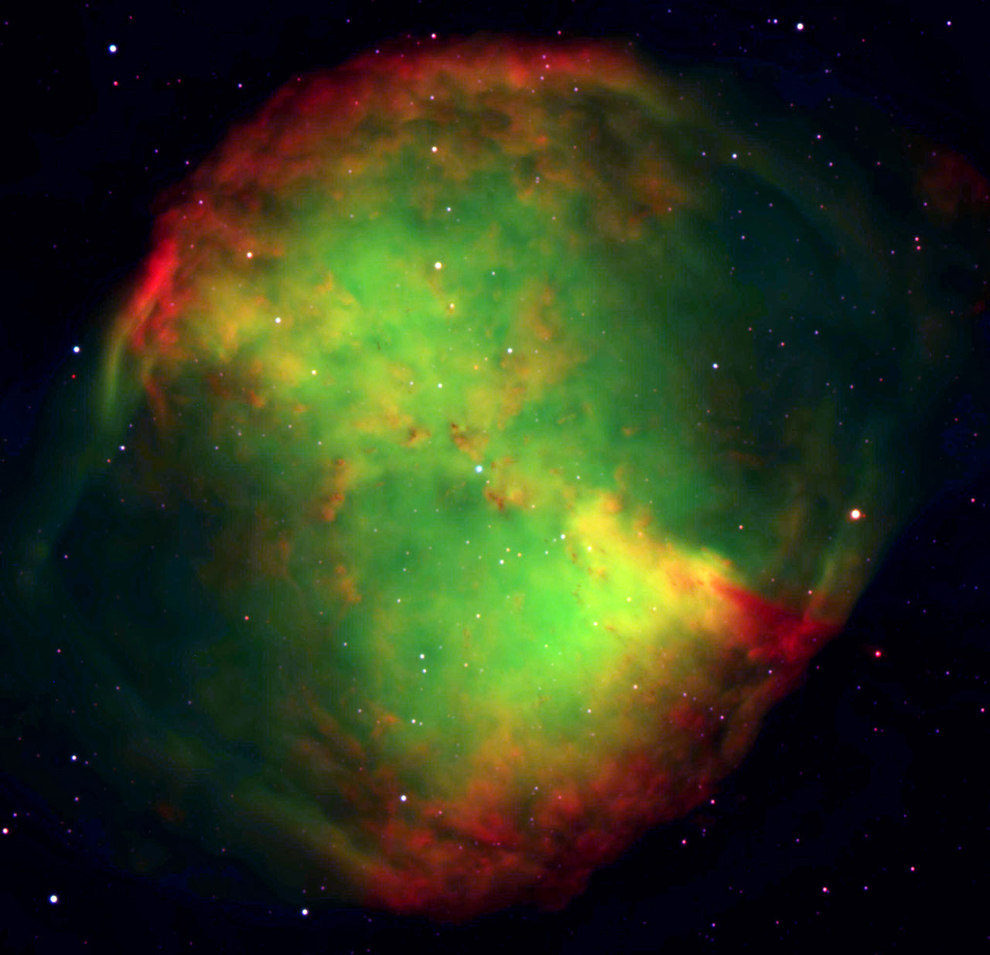"Hubble" saw a star "shooting" plasma balls

Our universe is amazing. The number of unusual objects in it can not be counted. The astronomers of the Earth constantly find something new and interesting, sometimes reporting it to mere mortals. At this time, scientists with the help of the Hubble telescope saw a star, next to which huge plasma balls are periodically ejected at a huge speed of 190,000 km / h. The star gun shoots every 8.5 years. This process continues for at least 400 years.
Plasma balls have become a mystery to astronomers, since the source material cannot be ejected by the observed star, V Hydrae. This star is a dying red giant that is located 1200 light-years from Earth. The star has already lost half of its mass, has a relatively low temperature of the upper layers and it is not able to throw out plasma balls the size of Mars. Astronomers have suggested that the source of the balls is an invisible star from Earth, which is located next to the red giant.
In modern astrophysics, the term red giants refers, as a rule, to such evolved stars that have descended from the main sequence. Most likely, scientists say, plasma balls are ejected by a star that passes in an elliptical orbit next to a red giant once every 8.5 years. As soon as the second star begins to pass through the outer layer of the V Hydrae, it collects the material of the dying neighbor. This material is collected in the form of a disk and then serves as a kind of launching pad for plasma balls that are ejected at a tremendous speed.
')
This planetary system can explain to scientists the origin of planetary nebulae, which are detected by the Hubble telescope in a large number of dying stars. Now it is believed that a planetary nebula is an astronomical object consisting of an ionized gas envelope and a central star, a white dwarf. Planetary nebulae are formed when the outer layers (shells) of red giants and supergiants with a mass up to 1.4 solar discharged at the final stage of their evolution. The planetary nebula expands at the end of its star's life.
“We knew that such objects could have high speed, but for the first time we observed such a process on our own,” says one of NASA scientists. "We believe that these gaseous objects appear in the final stages of a star's life."
Observations made by scientists using the Hubble telescope suggest a huge number of planetary nebulae. Scientists also say that these nebulae are very different in structure and complexity. The telescope often recorded gas emissions near stars, but the cause of the emissions remained unknown. Scientists assumed that the cause is a star that cannot be seen in the photographs taken by Hubble. The statement of astronomers can be considered fair, since there are a lot of double stars in our galaxy. Proving that the cause of the emission of plasma - this neighbor of dying stars was not easy.

“We wanted to identify a process that is causing an extraordinary transformation of dying stars into beautiful twinkling planetary nebulae. These changes occur over a period of 200–1000 years, which is simply nothing by space standards, ”says Raghvendra Sahai from NASA.
The Sahai team has used the Hubble STIS (Space Telescope Imaging Spectrograph) tool, using it to monitor V Hydrae for 11 years. The data showed scientists that in the observed region periodically appear huge plasma balls heated to very high temperatures. Their temperature reaches 10 000 degrees Celsius. As it turned out, for the first time these balls were observed by another team of scientists back in 1986. “Observations have shown that these balls are moving. For example, STIS recorded only the plasma balls that appeared, the balls that moved a little further away from the star, and the balls that are very far from the star, at a distance of more than 60 billion kilometers.

One of the planetary nebulae is the Dumbbell Nebula.
Thanks to the collected data, scientists managed to build a model of the formation of these plasma giant objects. As mentioned above, this model includes the star Hydrae V itself and its invisible companion from the earth.
This model fairly plausibly explains what is happening. In addition, we already know what could be the reason for the formation of accretion disks. The disk itself is a structure resulting from the fall of a diffuse material with a rotational moment on a massive central body (accretion). The red giants do not have such disks, but they often have neighboring stars with a smaller mass. Stars like V Hydrae are probably the “supplier” of emissions.
The surprise of scientists in the observed case caused the fact that the plasma is not ejected in one direction. The direction is gradually changing. For almost 20 years of observing V Hydrae, scientists have found that sometimes the brightness of this star for a short time is significantly reduced. And it looks like something passes in front of the star's disk. Scientists now believe that this could be a plasma ball, one of those discussed above.
Now the team of astronomers is going to continue to observe and analyze the accumulated data.
Source: https://habr.com/ru/post/398221/
All Articles